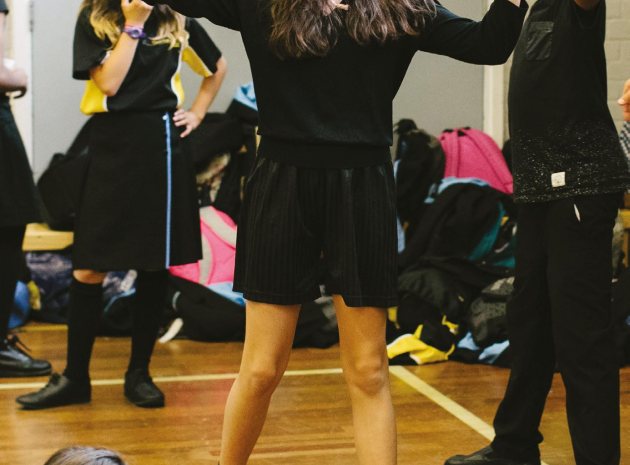Effective transition between Key Stage 2 and 3 is essential if secondary schools are going to establish the right ethos and expectations for Year 7 students.
Ofsted’s report Moving English Forward (2013) highlighted that the quality of transition between Key Stages 2 and 3 in English is often unsatisfactory and that a lack of communication and exchange of ideas between primary and secondary schools weakens the curriculum offer for pupils. Two years later, Ofsted’s Key Stage 3: the wasted years? identified good provision for social transition, but insufficient attention being paid to academic transition.
Building a bridge
For the last four years Globe Education has been working in London and in North East Lincolnshire on a project designed to build both a social and academic bridge between primary and secondary schools. The National Curriculum requires Key Stage 3 students to study two complete plays by Shakespeare and for them to memorise lines of poetry or drama. We work with students and teachers using A Midsummer Night’s Dream which, dealing with the themes of change and friendship, reflects the fears and concerns of 11-year-olds on leaving the safety and known world of their primary school for the unknown world of the secondary school.
The project prepares students to perform a 60-minute ensemble performance of the play to their peers, family members and carers at the end of the first half-term in their new school. We encourage a promenade performance, as that allows the students to own the different spaces in the school. Their confidence and self-esteem is raised by being able to speak and perform Shakespeare’s work and their social skills are enhanced by having to work with new people in a highly collaborative project where they need to listen to, as well as support and encourage each other to achieve a high quality performance.
Setting the scene
Work begins in July at the first intake day for Year 6 pupils at the designated secondary school. A Globe Education Practitioner tells the story of A Midsummer Nights’ Dream to the whole group and students actively participate. They speak Shakespeare’s language and offer opinions on the moral dilemmas faced by characters, as well as the decisions they make. Hermia and Lysander’s flight into the forest encourages students to talk about how it feels to move into a new environment.
A training session for primary and secondary teachers, also in July, offers them ideas, active approaches and techniques for teaching the play. A second session in the autumn term for Year 7 teachers helps them to direct and stage the performance for their class, as well as staging the ensemble performance for the whole year group. Early in the autumn term, each English class in year 7 receives a rehearsal workshop with a Globe Education Practitioner on their chosen scene observed by the class teacher. The practitioner works with the students on performance techniques such as projection, and on blocking the scene collaboratively.
Everyone benefits
Comments from teachers’ evaluations confirm the quality and inclusivity of the drama activities and how they can be used in the classroom to meet curriculum aims. One teacher commented. “I used to dislike teaching this play, now I cannot wait to get started.” As well as promoting creativity and success in lessons to bring the play to life, teachers feel empowered to adopt the approaches and use them for teaching other texts, because of the way the project links to the National Curriculum. They tell us how students have a good understanding of A Midsummer Night’s Dream, having analysed and explored text and characters. Discussion and debate helps to develop their oracy skills. In the ensemble performance teachers, along with family and friends, see students perform their lines, with confidence in a new environment.
By bringing primary and secondary schools together, teachers are given the opportunity to develop a creative curricular bridge between schools. The academic attainment gap is addressed by giving students the opportunity to work actively, playfully and creatively on a play ahead of entering secondary school. In turn, this contributes significantly to helping students’ feel more relaxed and easing concerns about a new and unfamiliar environment.
About the author
Georghia Ellinas, Head of Learning, Globe Education at Shakespeare’s Globe










